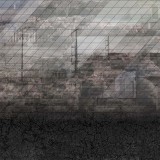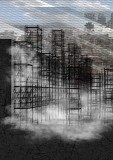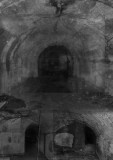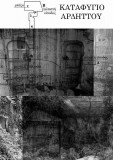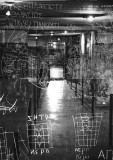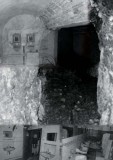Supervisors:
2015
This thesis attempts to approach the meaning of outcast from a spatial and a social point of view, through the prism of bipolarisation.
Αn object, a subject, an action or an idea could be considered as an outcast. The outcast carries the identity of negative pole since it is charged with a negative sign, whereas it is excluded and separated from its opposite, which is therefore charged positively and included in a context constructed by the society. We are searching for the elements which render something an outcast, namely the terms and conditions of every classification - evaluation.
Thus, by using the tool of bipolarisation, as a consecutive taxonomic process of outcasts production, through the action of exclusion, we try to look for outcasts within the contemporary urban landscape. This search process has revealed the notion of boundary, as a constructed element of the positive pole, used for the enforcement of the order, the protection of included components and the exclusion of outcastes. The subsets, though, since they are part of a broader total of the city, they claim more space, which leads to conflict. The outcome of this conflict is not only the modification of boundaries, but also the creation of gaps, which give the opportunity of contact and interaction between the two poles. These gaps constitute transition spaces - passages, thresholds of communication and conditions change in the interior of every subset.
In this thesis, we recognise the city as a structure full of subsets - enclaves, which are either sometimes evaluated with a positive sign or some others with a negative one, and we subsequently attempt to detect of the outcasted elements in this apparatus. In order to accomplish a more comprehensible analysis, the thesis is focused on the dipole over city - under city, by deploying the data produced by the theoretical analysis of urban landscape under crisis in Athens. By assuming that the outcast is placed underground, we are searching for and researching the material existence of underground Athens. We are collecting information and we are putting it in parallel with the meanings which are being investigated, in a constant search of their association elements.
In the end, we are choosing three underground spaces, in the interior of which we are constructing an atmosphere based every time on a basic detected element of outcast. Those areas are 1. the shelter, 2. a part of the ancient wall of the city of Athens and 3. the undermined and incised river of Ilysos. Every area is charged with a different characteristic of spoilage, 1. the a-logon, 2. the imprisoned and 3. the dead. All these are synthesising the atmosphere which describes and locates the theoretical context that was presented on a spatial level.
